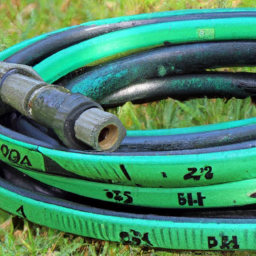Garden Hose Diameter What is it
What Is The Diameter Of A Garden Hose
Everything You Need to Know About The Diameter Of A Garden Hose
Garden hoses help homeowners maintain beautiful and healthy outdoor spaces, allowing them to easily connect to water sources and irrigate plants and patches of grass. But what is the diameter of a garden hose?
Determining Garden Hose Diameter
The diameter of a garden hose refers to two different measurements, the inner diameter (ID) and the outer diameter (OD). It's important to know both of these measurements if you plan to purchase or use a garden hose, as they directly relate to the fittings used in the system and the overall flow of water.
Inner diameter is the measurement from the wall of the inner circumference at its widest point. This measurement can vary between a range of to 1 depending on what type of garden hose you're using. The majority of standard garden hoses have inner diameters of or .
The outer diameter of a garden hose is the measurement of the outer circumference of the hose at its widest point. This is an important measurement because it helps you to determine if the hose will fit into the fittings you're using. The standard outer diameter for a garden hose is usually , 1, or 5/8.
Choosing the Right Garden Hose
In order to get the most out of your garden hose, you need to make sure you're using the right type and size for your project. Garden hoses come in a variety of materials, sizes, and lengths, so it can be overwhelming when you're trying to decide on the best one for your needs.
If you're looking for more than standard water flow, then you may want to consider a hose with a higher inner diameter. A hose with an ID of 1 will allow for up to 70% more water flow than a hose with an ID of . Larger hoses tend to be more expensive, but they may be worth it if you need higher water flow for special projects like filling up a pool or large pond.
Your choice of material is also important. The most commonly used materials are rubber, vinyl, and polyurethane. Be sure to check if the material is lead-free, as some vacuum hoses contain lead components that could leach into your water if the hose develops a tear.
Polyurethane hoses are highly durable, lightweight, and long-lasting, making them great for high-pressure applications or when using a hose over long distances. Vinyl hoses are the cheapest option, but they break down and become brittle much quicker than other types of hoses.
Important Considerations
When deciding which garden hose to purchase, make sure to consider how long it needs to be to reach your faucet, what type of outdoor spaces you'll be irrigating, and the water pressure available in your garden.
Also keep in mind that the outer diameter of the garden hose will influence how much water is able to flow through it. If your hose has a larger diameter, more water should be able to pass through it, which is great for high-pressure applications.
Final Word
Knowing what the diameter of your garden hose is an important part of making the most out of your garden irrigation system. Make sure to measure and compare hose inner and outer diameters before purchasing a garden hose, as this will help you to determine the right size and material for your needs.
Remember that while larger garden hoses tend to be more expensive, they are often the best choice for high-pressure applications and longer distances.
Take care to ensure that the material you're using is lead-free, as many vacuum hoses contain lead components that could leach into your water over time. With the right garden hose, you'll be able to keep your outdoor spaces healthy and beautiful.

Previous Page
Next Page
